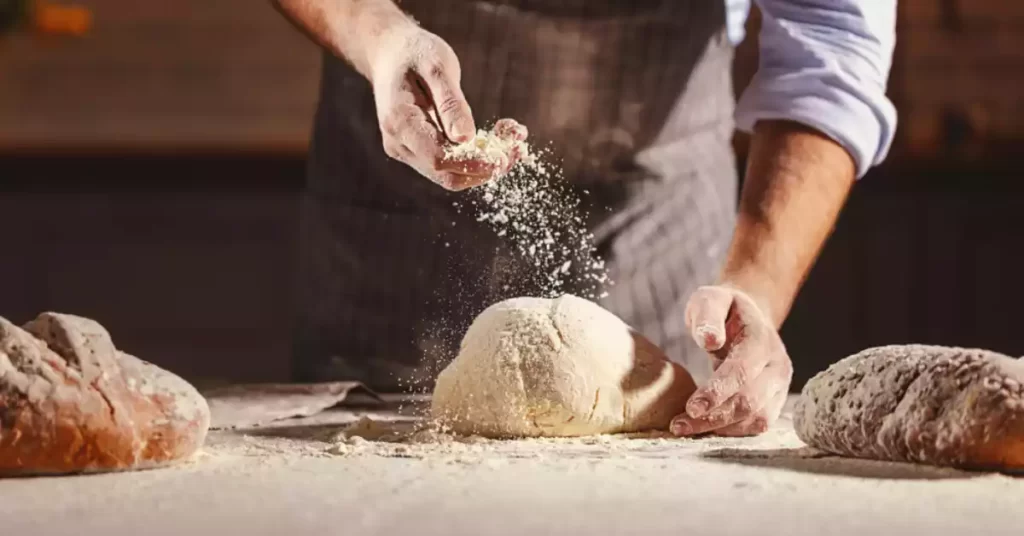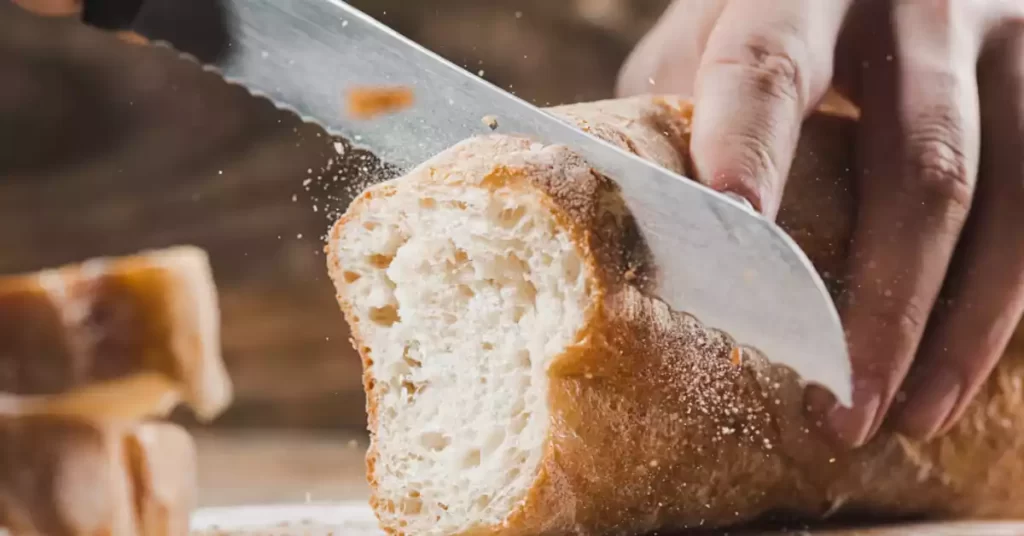We often marvel at the wonder that is freshly baked bread. Its enticing aroma, golden crust, and the warmth that engulfs our senses as we pull it apart to reveal its soft and spongy inside. Indeed, bread is an integral part of our culinary universe. Its texture, specifically its softness and sponginess, is what sets it apart from other baked goods.
The magic that transforms simple ingredients into a loaf of bread with an enchanting soft and spongy texture is science in its most delicious form. Essential elements like gluten and yeast contribute to the distinctive texture. The right ingredients and careful execution of the bread-making process result in that much-coveted soft and spongy structure.
Bread’s texture is not just about aesthetics or sensory pleasure. It affects the bread’s quality, its versatility in different dishes, and ultimately, our eating experience. Understanding what makes bread soft and spongy can enhance our appreciation of this humble food staple and even improve our bread-making skills.
The Science Behind Bread
Role of Gluten in Bread’s Texture
Gluten, a protein found in wheat and other grains, is the invisible network that gives bread its structure. When flour is mixed with water, the gluten proteins form a stretchy and elastic matrix. This gluten network is essential in making the bread dough rise and giving the final product its characteristic chewiness.
Yeast and its Impact on Bread’s Sponginess
Yeast, a key player in the bread-making process, is responsible for the sponginess of bread. It ferments the sugars present in the dough, producing carbon dioxide gas. This gas gets trapped in the gluten network, leading to the dough’s expansion and the bread’s airy and spongy texture.

Ingredients that Make Bread Soft
Role of Fats in Bread’s Softness
Fats play a dual role in the texture of bread. Common fats used in bread-making include oils, butter, and sometimes, eggs. When fats are incorporated into bread dough, they envelop the flour particles, inhibiting their contact with water. This action reduces the formation of gluten strands, resulting in a tender and softer crumb. Furthermore, fats help to maintain moisture in the bread, preventing it from drying out and helping it stay soft for longer. It’s interesting to note that fats also add richness to the flavor of the bread, complementing their role in texture enhancement.
Influence of Sugars on Bread’s Texture
Sugars in bread dough serve several purposes. From a texture perspective, they contribute significantly to the softness of bread. Sugars are hygroscopic, meaning they can attract and hold onto water molecules. This quality allows bread to retain moisture during and after baking, ensuring the crumb stays soft and fresh for longer. Sugars also play an indirect role by acting as food for yeast, fostering the production of carbon dioxide, contributing to the bread’s sponginess.
Importance of Liquid Ingredients in Bread
Liquid ingredients are fundamental in bread-making, with water and milk being the most commonly used. Water is the primary agent that initiates gluten formation when mixed with flour. Its quantity can influence the gluten’s strength and elasticity, impacting the bread’s final texture. On the other hand, milk contributes to a softer and richer crumb due to its protein and fat content. The lactose sugar in milk also aids in browning the crust, adding another layer of flavor and texture to the bread.

Bread Making Process and Its Effects
Relevance of Kneading in Texture Development
The process of kneading is where the magic begins in transforming flour and water into bread. Kneading helps the gluten proteins to align and form a network, making the dough elastic and capable of trapping carbon dioxide. This process is essential to create a well-structured bread with a pleasing mouthfeel. However, the amount and intensity of kneading must be balanced. Over-kneading can over-strengthen the gluten network, making the bread tough, while under-kneading can result in a crumbly loaf.
Importance of Proofing to Achieve Sponginess
Proofing is the resting period allowed for the dough after kneading. During proofing, yeast ferments the sugars present in the dough and produces carbon dioxide. This gas becomes trapped in the gluten network, causing the dough to rise and contributing to the bread’s sponginess. The duration of proofing is critical; insufficient proofing time may not allow the dough to rise adequately, resulting in a dense texture, while over-proofing can lead to a collapsed structure.
Baking and Its Impact on Softness and Sponginess
The baking stage is the culmination of all the previous stages in bread-making. As the dough heats up in the oven, the water in it starts to evaporate, causing the gas bubbles in the dough to expand. This phenomenon is known as “oven spring” and contributes to the final volume and sponginess of the bread. The heat also solidifies the structure of the bread and develops the crust, providing a contrasting texture to the soft crumb inside.

Mistakes that Lead to Hard and Dense Bread
Over-Kneading and its Consequences
While kneading is crucial in developing gluten and creating an elastic dough, over-kneading can do more harm than good. Over-kneading can cause the gluten network to become too tight and lose its flexibility, leading to a dense and hard loaf. This mistake can be avoided by being mindful of the dough’s consistency during kneading; the dough should be smooth and elastic, not stiff or too sticky.
Implications of Insufficient Proofing
Just as over-kneading can result in a dense loaf, so can under-proofing. When the dough is not given enough time to rest and rise during the proofing stage, it may not develop enough gas bubbles to create the desired spongy texture. Consequently, the bread will have a smaller volume and a denser texture. Proper proofing, on the other hand, allows the dough to reach its full potential in terms of volume and texture.
Effects of Over-Baking on Bread’s Texture
The final stage of baking also requires careful attention. Over-baking can cause the bread to lose too much moisture, resulting in a hard crust and dry crumb. Monitoring the baking time and temperature can help avoid this problem. The bread should be baked until it reaches a golden brown color and sounds hollow when tapped at the bottom. These signs indicate that the bread has achieved the perfect balance of soft and spongy texture.

Techniques to Make Soft and Spongy Bread
Best Practices for Kneading
Kneading should be done with a balance in mind. The dough should be kneaded until it becomes smooth and elastic, which usually takes about 10-15 minutes by hand. Using the windowpane test – stretching a small piece of dough to see if it can form a thin, translucent membrane without tearing – can help determine if the dough has been kneaded sufficiently.
Right Ways to Proof Bread
Proofing should ideally be done in a warm and humid environment, as yeast works best under these conditions. The dough should be allowed to rise until it doubles in size. A simple way to check if the dough has risen enough is the finger dent test: if a dent remains when the dough is lightly pressed with a finger, it means the dough has proofed enough.
Optimal Baking Times and Temperatures
Baking time and temperature may vary depending on the type and size of the bread. However, a general rule is to bake bread in a preheated oven at a high temperature (around 450°F) for the first few minutes to achieve a good oven spring, and then lower the temperature for the rest of the baking time to allow the bread to cook thoroughly without burning.
Frequently Asked Questions
How Can I Make My Homemade Bread Softer?
You can make your homemade bread softer by adding fats such as butter, oil, or eggs to your dough. These ingredients coat the flour particles, limiting gluten development, and keeping the bread moist. Kneading the dough sufficiently and allowing it to proof properly will also contribute to a softer bread texture.
Why Is My Bread So Dense?
Dense bread can result from several factors including over-kneading, under-proofing, and over-baking. Over-kneading makes the gluten network too tight, under-proofing doesn’t allow the dough to develop enough gas bubbles for a light texture, and over-baking drives off too much moisture, leading to a dry, dense crumb.
Can I Use All-Purpose Flour to Make Soft and Spongy Bread?
Yes, you can use all-purpose flour to make soft and spongy bread. However, bread flour, with its higher protein content, will develop a stronger gluten network and yield bread with a more desirable texture.
Conclusion
The journey of bread from simple ingredients to a delightful loaf with a soft and spongy texture is a fascinating blend of science, technique, and art. The role of gluten, yeast, and other ingredients, as well as the steps of kneading, proofing, and baking, all contribute to the final texture of the bread.
Understanding these aspects not only enhances our appreciation of bread but also empowers us to create our own soft and spongy loaves at home.
